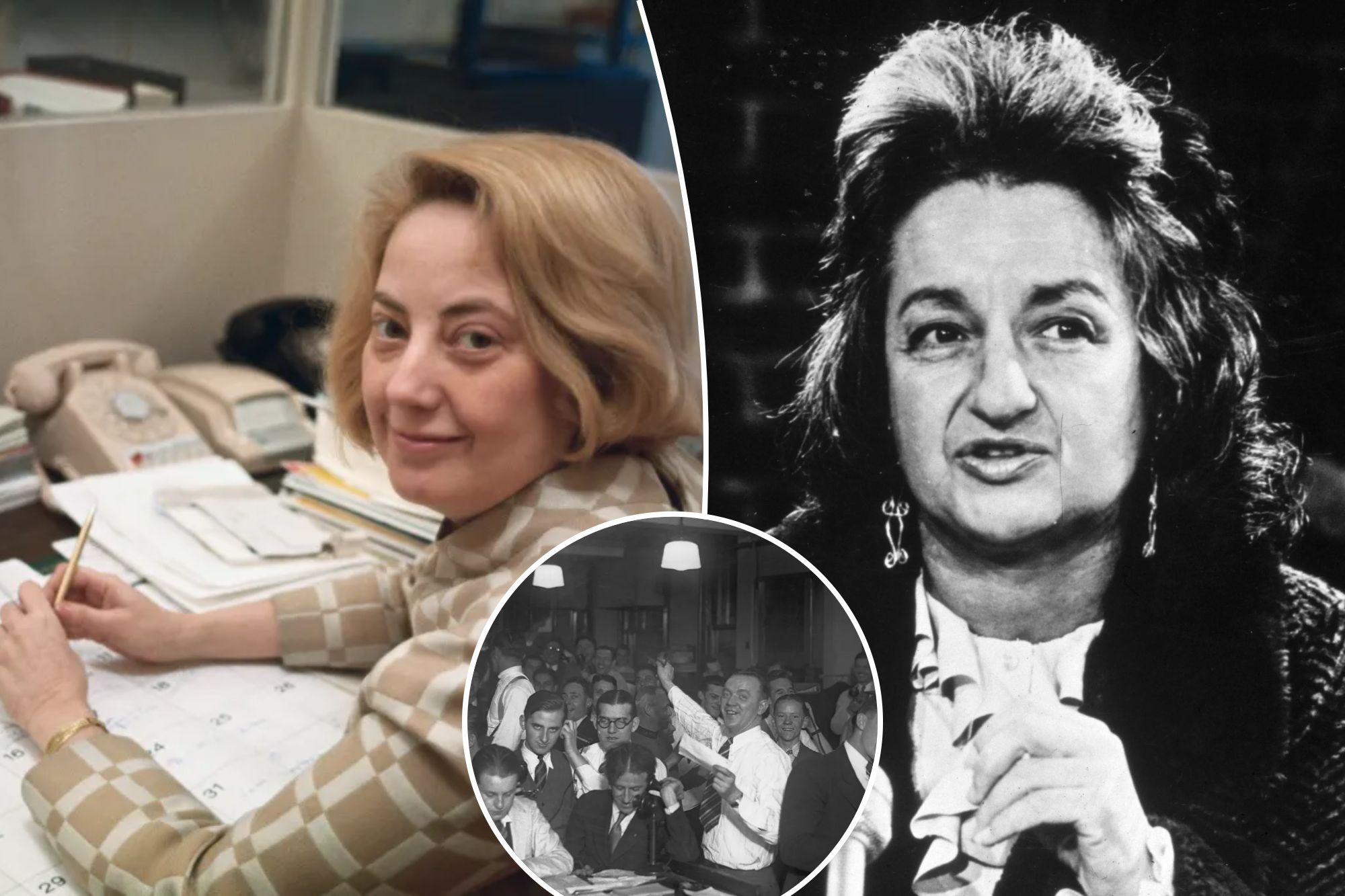
In the Swinging Sixties, one of the most popular products on male-dominated Wall Street was the Mrs. Francine Gottfried’s chest like a torpedo.
Dressed proudly under a tight sweater, Ms. Gottfried was innocently a size 43 every weekday when the 20-year-old arrived from her Brooklyn home to her menial data processing job on the Street.
And every day, a macho crowd of clerks and shopkeepers gathered — some even climbing lampposts and trees — to get a better look at the 5-foot-4 young lady dubbed “The Sweater Girl” as she emerged from the subway in what was became known as “The Great Wall Street Titty Riot”, circa 1968.
It’s just one of many instances of unapologetic sexism that once dominated Wall Street at a time when “No Ladies” signs were posted on the doors of nearby lunch clubs and inside the hallowed halls of brokerage houses and investment banks. , according to the historian Paulina. Bren’s fascinating and highly engaging exposé, She-Wolves: The Untold Story of Women on Wall Street, (WW Norton), which covers the period from the 1960s to the September attacks. 11, 2001.
“Wall Street’s female pioneers, its original She-Wolves, ventured into uncharted territory not knowing what awaited them there but men, many men, few of whom would roll out a welcome mat” , writes Bren.
When Harvard Business School opened its classes to women in the fall of 1963, graduates from the elite business schools became among the earliest waves of women who came to the Street seeking big-money commercial jobs in that which was a bad boy culture.
According to the author, they soon learned that an equal degree does not mean equal opportunity.
Some women were allowed into the research work that went on behind the scenes, Bren notes, but they were shut out of the lucrative sales and marketing jobs that were reserved for men.
And when a woman was lucky enough to get through, she faced brutal treatment and mind-boggling sexual harassment.
It was in the small houses of mediation that “women who dared to enter this male bastion, this old men’s club, could find a foothold, however precarious,” writes Bren.
When Alice Jarcho started as a Wall Street clerk for Hirsch & Company in 1965, a male colleague exposed her, Bren writes.
And when Jarcho became the first woman to trade on the floor, dildos instead of stock orders were sent to her through pneumatic tubes.
A sympathetic coworker tried to explain the culture to her, saying, “Our fathers were here. Our grandparents were here. We have never dealt with a woman.” Jarcho, the author writes, “was disrupting almost two hundred years of sedimented testosterone culture.”
Jarcho left Wall Street in 1993, knowing that “she had sold her soul. She had become the person who tolerates the intolerable for a dollar,” writes Bren.
Muriel “Mickie” Siebert had been an anomaly when she arrived in New York from Ohio in 1954 and was hired in the research department of Bache & Co.
She would go on to become the first woman member of the New York Stock Exchange in 1967.
She called her membership badge “the most expensive piece of jewelry” — costing her $445,000 plus the $7,515 initiation fee.
For black women, even with a Harvard MBA, careers on Wall Street were even rarer.
But times were changing after the civil rights movement and the exploding women’s movement.
Betty Friedan, who founded the National Organization for Women (NOW) and authored “The Feminine Mystique,” declared to a crowd of ten thousand gathered near the Financial District in August 1970, “the women’s movement will be the greatest movement for society .and political change in the nineteen seventies.”
The paper’s fliers mocked Wall Street as “the most visible symbol of de facto sex discrimination,” Bren writes.
In silent protest, the women of Wall Street began wearing pantsuits, abandoning the standard fashion of workday attire.
In 1970, the First National Ogle-In was held, when the tables were turned and men were grabbed, wolf-whistled, body parts appraised, air-kissed, and some were even captured.
That same year, Wall Street Week with Louis Rukeyser was a hit on public television, introducing TV viewers to women in finance like Siebert.
The Go-Go 80s arrived in glittering excess, along with the advent of a Bull Market. Greed and debt had suddenly become fashionable and finance had become glamorous, Bren observes.
With the Clintons in power in the 90s, the economy boomed, the federal budget was balanced, and everyone from school kids to retirees seemed to day trade on their home computers.
Billed as the “Money Honey”, the beautiful Maria Bartiromo, in 1993, became one of the most followed and respected female Wall Street reporters and stars of business television, operating from the trading floor.
When the planes hit the Twin Towers of the World Trade Center in September. By 11, 2001, killing nearly 3,000 people, electronic trading on the floor of the NYSE had already “changed from trading desks to investment banking hedge funds and private equity firms,” Bren writes.
Today, however, only one in 10 of those who now sit on the investment committees where private equity investment decisions are made are women. “Wall Street was built for men,” Bren laments, “and basically, it remains an old boys’ club.”
#NYCs #Pioneering #SheWolves #Finally #Shattered #Wall #Streets #Glass #Ceiling
Image Source : nypost.com